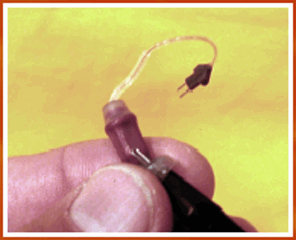Part 2 of this series looked at the original HEARx vision in which ENT Medical Directors, guided by a 7-member Medical Advisory Board, were set to legitimize audiology within the healthcare industry and among consumers. Today’s post describes the strategies for developing and underwriting this endeavor, as described in the original HEARx Marketing Plan{{1}}[[1]]HEARx Marketing Plan, internal document, 1986[[1]]. All quotes in this post are from that document.
HEARx envisioned a national chain of “outlets:” 25% company-owned, 75% comprised of practices that were “owned in cooperation with selected hearing professionals.” Starting with three Massachusetts “retail stores” at its April 11, 1986 incorporation in Delaware as HEARx, Ltd., the plan was to have 200 outlets by 1991 that controlled 14% of the US market for hearing services and products. The strategy was stated strongly and simply: “to open the maximum number of hearing centers in the shortest period of time feasible.”
The “HEARx Cooperative Ownership Arrangement” was central to expansion efforts. The marketing plan notes that the “selected hearing professionals” tapped for membership would be pulled from the “existing pool” of 12,000 ENTs, 35,000 certified audiologists, and about 30 “selected” academic medical institutions. This gives me pause — I think the Audiology profession has upwards of 12,000 members nowadays. Is our stress-free, highly desirable profession down by 2/3’s or was the marketing plan off by a huge amount?
Whatever… The deal was that you had to pony up $25,000 as an initiation fee if you were “selected” for membership, then $100,000 more for the “initial operation of a store.” HEARx would match this with another $100,000.{{2}}[[2]]It sounds like a fraternity or sorority, but it also rings a vague “Kinko’s” bell in my brain. I’m not sure when the Kinko’s model came into existence, but I think it was similar and was sometime in the 80s. Anyone remember and want to chime in?[[2]] Bear in mind that all outlets were start ups, so early entrepreneurial types with existing practices may not have been in the running for membership. Probably just as well — I doubt any would’ve joined, given the offer outlined in the HEARx plan.
For this $125,000 up front deal, HEARx committed to provide national/local advertising, test equipment, hearing aids (at HEARx pricing), and pricing structures. Members got 40% of their store’s pre-tax profit, where profit was calculated as what was left over after corporate overhead charges were expensed out. Wow — all you needed was one guy at corporate pulling down a huge salary, not to mention the care and feeding of the Medical Advisory Board, to turn healthy practices into negative revenue centers. But wait, there’s more! The sample P&L projection for a future store in the Plan also showed a $50,000 expense line item for advertising, while the Corporate Office P&L Summary showed zero dollars in annual expenses for advertising. At that rate, HEARx’s $100,000 contribution to the store would vanish in just two years and the “selected professional” would be paying off equipment, cost of goods, and general operating expenses for the foreseeable future, wondering when those “pre-tax profit” numbers might turn positive{{3}}[[3]]I’ve asked around, but have yet to find someone who elected to join this club on their own. Anyone want to come forward? How did you do?[[3]]
Gee, do you think Dr Brown had any notion that his “partners” might not come out on top? Here are a few numbers from the HEARx Business Plan projections (last 18 pages of the Marketing Plan) to help you think on this. Upper management at the Corporate Office consisted of a CEO, 3 Directors, 1 President, and 7 (really) Vice Presidents, plus the Medical Advisory Board of 7. Annual expenses by the 5th year in the “P&L Summary” were estimated at over $3.5 million for payroll+benefits, $50,000 for Directors, close to $100,000 for consultants, $100,000 for travel and auto, $200,000 for rent, and over $80,000 for liability insurance{{4}}[[4]]I am seriously trying to remember when audiologists could first get liability insurance as audiologists. I don’t think it existed back in the late 80s did it? I’m almost positive that such an animal didn’t exist for dispensers. If that’s the case, then HEARx’s substantial ENT contingent probably found that getting their liability insurance covered through involvement with the Corporation was a nice perk. I am ready to be educated on this, and hope someone will comment[[4]] . That same Summary shows Sales & Services of $136 million on 25% cost of goods, yielding Gross Profits of over $101 million and a Net Profit of $26,084,802. I promise I am not making these numbers up, though I think someone was. Note that the Summary only shows rent for the Corporate Office, as projected rent for 200 offices in the 5th year at $50K each (per the Plan) would show a Rent expense of $10 million. So this Summary document appears to have mixed apples (total profits) with oranges (just Central Office expenses, no cost of rent, advertising, etc., for retail stores) in order to show big projected profits.
Omg — if there was ever an argument for those of us in the hearing healthcare field to take a business course, much less an accounting course, this is it! Stay tuned for further unravelings as HEARx finds investors.
Photo from: http://agentval.wordpress.com/teaching-texas-home-buyers/guide-to-closing-costs/








Holly – great story so far – I am enjoying the all-too-familiar over ambitious plan based on inaccuracies and miscalculations and lack of industry knowledge. keep up the great work!
Terry Ross
Vice President, MedRx, Inc.
Thanks Terry. I appreciate your comment and the fact that you’re reading this series.